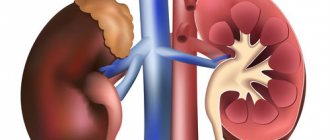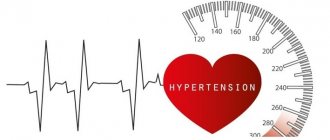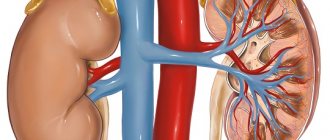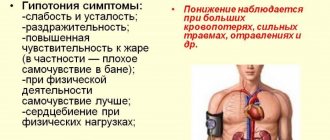- What is blood pressure?
- What pressure is called upper and lower?
- What does syastolic blood pressure mean?
- What you need to know about diastolic pressure?
- Why does the lower pressure change?
- Pulse pressure: what is considered normal?
- How to measure blood pressure correctly?
- Why is it important to use a blood pressure monitor regularly?
Blood pressure is one of the objective indicators that allows us to assess the state of human health and the quality of work of internal organs. Thanks to modern tonometers, anyone can find out their blood pressure in a few minutes. However, you need not only to be able to use such devices, but also to understand what the numbers on the monitor mean.
What is blood pressure?
Tonometers record the blood pressure on the walls of the arteries, which is why it is called arterial pressure. In other words, the indicator means how much the level of fluid pressure in the circulatory system is higher than atmospheric pressure.
If we describe the whole process in simple words, it will look like this:
- The heart muscle contracts;
- The aortic valve closes;
- The heart receives highly oxygenated blood from the lungs;
- The following reduction occurs;
- Blood moves to all organs.
The entire circulatory system is involved in the formation of blood pressure, including the blood itself, which supplies tissues with oxygen, removes waste products, and provides thermoregulation. BP shows how well these functions are performed.
Medication
To relieve excessive stress on the walls of blood vessels, doctors prescribe drugs from the following groups:
- Beta blockers
. The pills block the flow of adrenaline to the heart muscle, causing the heart to relax. Contractions become less intense and the interval between them increases. As a result, blood pressure and pulse decrease. - Calcium antagonists
. Calcium plays a role in transmitting receptor signals to cells, so elevated levels of calcium cause cells to contract and tense too much. The supply of calcium through calcium channels into the blood vessels and heart is inhibited. A decrease in calcium levels “relaxes” the cells, and blood vessels dilate. - ACE inhibitors
. The drugs block certain enzymes. When the vessels stop receiving it, the patency gradually increases and the pressure drops, the load on the heart decreases.
Medications of a suitable group are prescribed by a cardiologist after examination.
[media=
https://youtu.be/7aW439Umwxg
]
What pressure is called upper and lower?
When the heart contracts, it creates a push for blood movement. This phase of the work of the heart muscle is called systole, and the indicator recorded at this moment is called upper or systolic pressure.
Before a new contraction, the heart relaxes as much as possible, the diastole phase begins, and at this moment the minimum pressure is recorded. It shows the degree of blood pressure on the vessels during the period between heart contractions.
Symptoms of diastolic hypertension
Hypertension, both systolic and diastolic, is usually manifested by the following symptoms:
- dizziness, cephalalgia, feeling of heaviness in the head;
- throbbing pain in the occipital or temporal region, often radiating to the eyeballs;
- pulsation in the head;
- “floaters” before the eyes and noise in the ears;
- facial skin hyperemia;
- tremor and numbness of fingers;
- irritability, anger, increased excitability;
- decreased performance;
- chills;
- sweating;
- tachycardia.
Attention!
Each patient may exhibit signs of high blood pressure individually. If you have frequent attacks of hypertension, you must have a blood pressure monitor and regularly monitor your condition.
What does systolic blood pressure indicate?
Any deviations of indicators from the norm indicate malfunctions in the functioning of one or another body system. Both values or only one of them can increase or decrease. For example, an increase in systolic pressure occurs when:
- Overactive thyroid gland – thyrotoxicosis, when the thyroid gland secretes too many hormones;
- Severe anemia, when the type of blood circulation changes;
- Slowing of the pulse - bradycardia, ineffective operation of the aortic valve, when the upper pressure increases due to increased blood release;
- A decrease in the elasticity of the aorta, an increase in the density of its walls - most often the cause is atherosclerosis of a large vessel in old age.
An increase in only the upper pressure without changes in the lower is called systolic arterial hypertension. But such a deviation does not always indicate a disease. So, with significant sports loads, an increase in upper pressure is also observed, and this is not considered a deviation from the norm.
Diet
Nutrition not only helps the body feel full, but also regulates a huge number of reactions in the body. Subject to the principles of a healthy diet, a person receives all the necessary amounts of vitamins and microelements from food. To lower blood pressure, the following should prevail in the diet:
- fresh berries and fruits;
- raw vegetables and herbs;
- porridge (barley, buckwheat, corn, etc.)
- dairy products and fermented milk (cottage cheese, kefir, sour cream);
- lean meats (poultry, beef);
- low-fat fish (can be sea or river: cod, carp, bream, pollock, pike perch, hake, pollock, flounder, pike);
- honey or sweetener instead of sugar;
- wholemeal bread;
- maybe a little dark chocolate.
[media=
https://youtu.be/6ZF1lDhhPIE
]
Despite the dietary nature of these products, you can prepare many interesting and tasty dishes from them. Fish and poultry should be baked in the oven without oil or with a minimum amount. You can make salads from vegetables or bake them, and eat fruits raw or make delicious smoothies from them. You can make excellent yoghurts, casseroles, or porridges from fermented milk products. Most patients note that with proper nutrition, not only does their blood pressure stop rising, but their overall well-being also improves.
It is worth limiting your consumption:
- alcoholic drinks;
- baked goods and sweets (sweets, cakes and cookies with cream, milk and white chocolate);
- fatty and fried foods;
- too hot, sour or spicy;
- salt - not completely, but you can’t eat too salty (salt retains fluid in the body, which causes fluid in the body to increase.
You should not completely exclude salt, spices and oil from your diet. There must be balance in nutrition. You can create an individual diet and general nutrition system:
- On one's own
— you can find on the Internet the basic principles of its preparation and daily diet templates. It is important to take into account such characteristics of your body as weight, height, age and general condition of the body. - Contact a specialist
- a nutritionist has a huge amount of experience in analyzing the current state of the body and drawing up a permanent or short-term nutritional structure.
It is important to approach this procedure competently and eat right all the time.
What you need to know about diastolic pressure?
The diastolic pressure indicator characterizes the degree of resistance of blood vessels and their permeability to blood. The health of the vascular system is determined by two main factors: the elasticity of their walls and the functioning of the kidneys. The human body contains a large amount of fluid; without its circulation, metabolism is impossible, and blood plays a crucial role in this process. It passes through the kidneys, which act as a kind of filter, regulate water-salt balance and remove toxins from the blood along with urine.
With this mechanism, an increase in diastolic pressure is usually associated with a violation of the removal of fluid from the body, an increase in its volume and an increasing load on the walls of blood vessels. If lower blood pressure exceeds normal levels for a long time, the risk of heart attacks and strokes increases. If it decreases for a long time, problems arise with the supply of oxygen to tissues and organs. Because of this, dizziness and fainting occur, especially during physical activity.
The causes of low diastolic pressure may be bleeding, prolonged hunger and dehydration, allergies with anaphylactic shock. The indicator decreases with insufficient production of the hormone renin, which regulates vascular tone. The decrease also occurs due to stress, fatigue and tuberculosis.
If the pressure surge occurs suddenly
When diastolic pressure increases, it is important to know the basic principles of first aid. They consist of the following steps:
- The victim needs to take a horizontal position, lie on his stomach face down.
- Place something cold along the cervical spine, ideally ice, this helps reduce pressure. After 30-40 minutes, massage this area to restore blood circulation.
- You can also influence biological points that normalize the functioning of the body. For hypertension, it is worth massaging the points under both earlobes. After this, draw a conditional line from the lobe to the middle of the collarbone. The procedure can be repeated a large number of times until the patient feels better.
Of course, if there is a significant jump in blood pressure, you need to call an ambulance. Due to the pathology that caused diastolic pressure, health may deteriorate even more significantly.
Why does the lower pressure change?
An increase in lower pressure may be associated with:
- Narrowing of the lumen in the renal arteries, their increased tone;
- Kidney diseases;
- Significant excess weight;
- Myocardial dysfunction;
- Diabetes mellitus;
- Changes in the concentration of hormones in the blood.
When diastolic pressure deviates from the norm, a person feels a loss of strength, chills in the lower extremities, and drowsiness. A nagging headache appears, sweating increases, concentration decreases and memory deteriorates. Possible discomfort in the heart area, arrhythmia. This is why it is important to measure your blood pressure regularly so that if there are any abnormalities, you can immediately consult a doctor.
Danger
An increase in lower pressure often has no symptoms, and a person does not even know about it. They may be discovered during a routine examination or when visiting a doctor for other reasons. There is a misconception that only elevated upper blood pressure threatens health and life, but in fact, an increase in lower blood pressure is no less dangerous. The heart in this state is constantly tense and practically does not relax. The blood flow in it is disrupted, the disease progresses, structural changes begin to occur, which ultimately become irreversible.
It is important to know that high lower blood pressure cannot be ignored. It leads to organ dysfunction and, without treatment, can result in death within six months. There is a high risk of developing thrombosis, heart attacks, and strokes.
Pulse pressure: what is considered normal?
Systolic pressure is considered normal in the range of 110-130 units, but with age this figure increases to 140 units. For diastolic pressure, the norm is 65-80 units; with good vascular elasticity, the indicator will be closer to the upper limit of the norm.
The difference between upper and lower pressure is also important. It is called pulse pressure and is normally 40 units; 120/80 is considered ideal. An increase in the gap to 65 units indicates a serious risk of developing heart and vascular diseases. In such a situation, malfunctions of the heart muscle provoke rapid wear and tear of the walls of arteries and veins, which accelerates the aging process.
In old age, the difference between syastolic pressure and diastolic pressure of 50 units indicates precisely that natural wear and tear occurs in the body, the walls of blood vessels have become less elastic.
A pulse pressure value of 60 units indicates a risk of heart disease and the need to urgently visit a doctor. If the tonometer shows a difference of about 20 units, most likely the blood pressure was measured incorrectly. With such a gap, the person’s health condition is critical.
Adjust individually
The question of whether it is possible to adjust indicators separately is also of concern to many. “Basically, all the drugs that we use to correct high blood pressure act on both upper and lower pressure. However, among the classes of antihypertensive drugs, we have the opportunity to select drugs with a predominant effect on systolic or diastolic pressure. Therefore, it is possible to implement a personalized approach to the patient based on his needs,” notes Maria Benevskaya.
For example, she says, medications that have a vasodilating effect will be more likely to cause a decrease in diastolic (lower) blood pressure. And drugs that reduce the force of heart contractions will reduce systolic (upper) blood pressure to a greater extent.
How to measure blood pressure correctly?
To obtain reliable blood pressure readings, you need to take measurements in a quiet environment at room temperature. For about an hour, it is not advisable to smoke or drink strong coffee or tea. For half an hour you need to eliminate physical activity. Your feet should be on the floor and your hands should rest freely at heart level.
There are a few more simple rules:
- During the measurement, you cannot move, talk or cross your legs;
- The cuff should fit snugly on the arm, but not squeeze it;
- If several measurements are required, at least 5 minutes must elapse between them;
- The cuff is selected so that it covers at least 80% of the shoulder circumference. If you have to hold the Velcro with your hand, the results will be incorrect;
- In the absence of back support, the indicators may be overestimated.
Doctors often refer to the so-called “working pressure”. The fact is that, depending on the state of the body and its individual characteristics, the interval of the upper and lower indicators may differ for different people. Working blood pressure is the blood pressure at which a person remains in good health. This could be, for example, 130/90 or 115/80.
There is only one way to determine your working pressure: measure it regularly. Then you can find out what values the tonometer shows when a person feels well. This is an important nuance, since with a reduced operating pressure the same 130/90 can be considered as a significant increase, although the numbers themselves are within the norm.
Treatment
Treatment should be carried out only under the supervision of a doctor. You should not do this yourself. First of all, you need to find out the reasons for the increase in lower blood pressure. If hypertension is secondary, treatment of the primary pathology is required. In any case, it is necessary to reduce the pressure, for which a set of measures is used, including:
- proper nutrition;
- loss of excess weight (if any);
- compliance with the daily routine (work and rest);
- physical activity (sports, physical therapy, walking);
- staying in the fresh air;
- taking medications;
- folk remedies.
Diet
Proper nutrition is of great importance for normalizing blood pressure. The diet should consist of:
- Fresh vegetables, herbs, berries and fruits.
- Lean meats.
- Dairy and fermented milk products.
- Lean fish.
- Bread made from wholemeal flour.
- Replace sugar with honey.
The following foods should be limited or avoided:
- salty (salt retains fluid in the body, which increases blood pressure);
- fatty and fried;
- sweet and buttery;
- alcoholic drinks.
All people with hypertension should limit salt in their diet
Medicines
You should only take medications prescribed by your doctor. Typically, medications from several groups are used to normalize blood pressure, including:
- Beta blockers are drugs that reduce the heart's need for oxygen, regulate its functioning and lower blood pressure.
- Calcium antagonists - increase the activity of renin, which is poorly produced in renal pathologies. Prescribed in severe stages of hypertension, for example, in renal failure, after heart attacks to prevent death.
- Diuretics (diuretics).
Traditional methods
Traditional medicine offers many remedies to lower diastolic blood pressure, but they should only be taken with the permission of a doctor. As a rule, these are decoctions and infusions that reduce nervous tension, help you relax and calm down.
Hawthorn
An infusion of the fruits of this plant relaxes vascular walls and relieves nervous excitability. A glass of water will require 20 grams of dry fruits. Boil for 30 minutes, then strain and add water to the original volume. Take a tablespoon three times a day.
Traditional medicine suggests treating hypertension with a decoction of hawthorn fruits
Motherwort
The infusion increases the strength of heart contractions, calms the nerves, and eliminates overexcitation. Two tables. Pour a spoonful of herbs into a glass of hot water and leave for an hour. Drink two per table. spoons every day before bed.
Diuretic collection
Pour a mixture of herbs (a tablespoon each of St. John's wort, oregano, motherwort and sage) with boiling water (two glasses) and leave for half an hour. Drink half a glass a day for a month.
Valerian
It has a relaxing effect on the central nervous system and helps lower blood pressure.
Peony
Pharmacy tincture from herbs and peony roots eliminates muscle spasms and has a calming effect.
Cedar cones
Tincture of pine cones helps lower blood pressure. To prepare, you need to take three whole cones, put them in a glass jar and fill them with vodka (1/2 liter), add ten pieces of sugar, a tablespoon of valerian tincture purchased at the pharmacy and leave for 10 days in a dark place. Strain and drink a tablespoon before bed. You can fill the cones two more times.
Beet
Freshly squeezed beet juice strengthens vascular walls and is used to lower blood pressure. You need to take two teaspoons of juice daily half an hour before meals.










